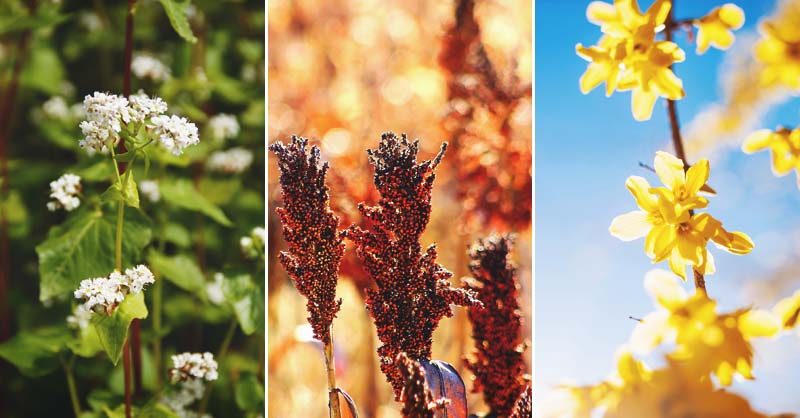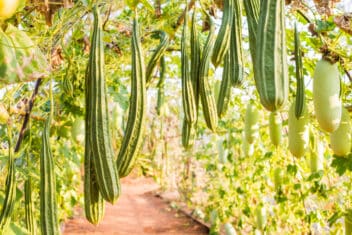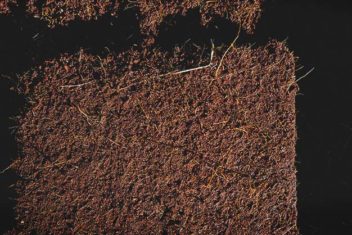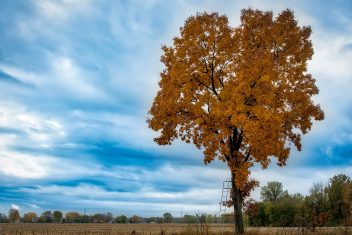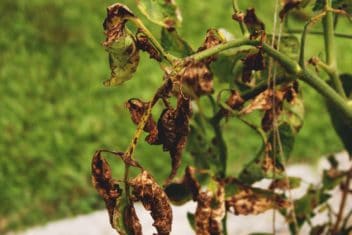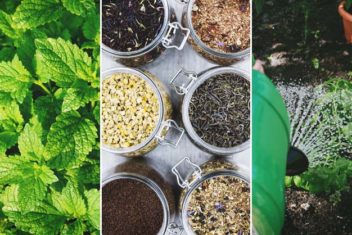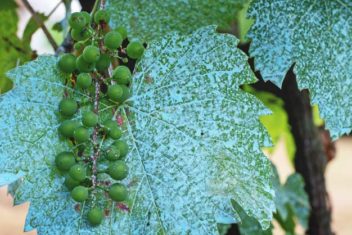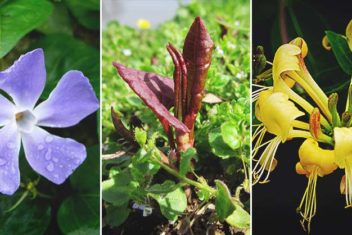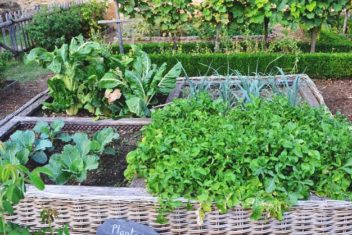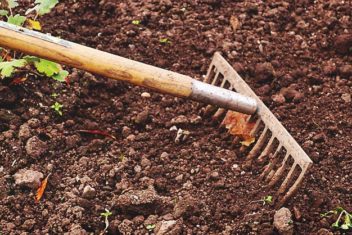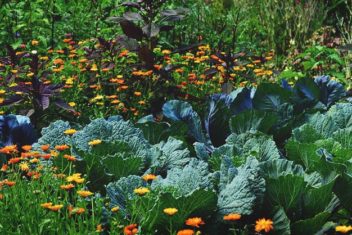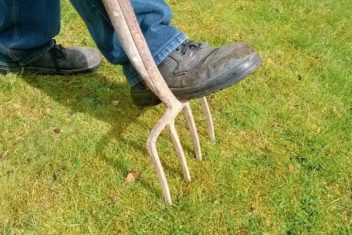The first time I heard someone mention allelopathic plants, I thought the speaker said, “holipathic.” I’d done lots of dabbling in holipathic medicine. So, I believed for a minute, we were talking about plants that promoted good health in humans.
The speaker listed sunflowers, mustard, buckwheat, and tillage radish as plants that fell into this category. I sat smugly in my chair, giving myself a mental high five since I already ate lots of those plants!
Then the speaker went on to include Rhododendron – a plant I knew was generally considered poisonous to eat. At that point, I had to raise my hand and ask the speaker to repeat the word.
This time the speaker spelled it A-L-L-E-L-O-P-A-T-H-I-C. I wrote it down and went home to scour the internet for information on what it meant. That was several years ago, and back then, I could barely find any information.
But as people become more concerned about the dangers of weed killers like glyphosate or dicamba, the research and use of allelopathy are becoming more popular.
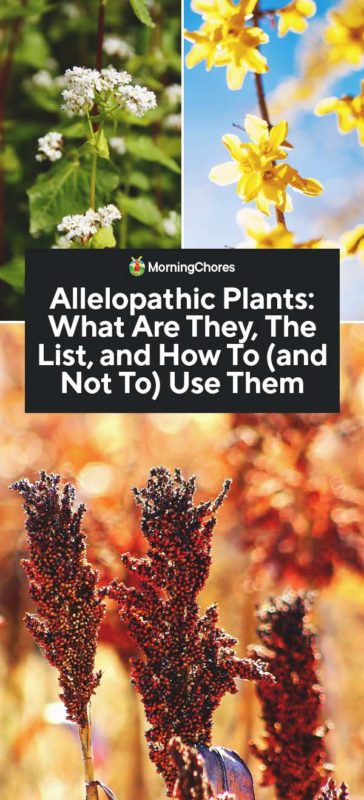
Common Allelopathic Plants
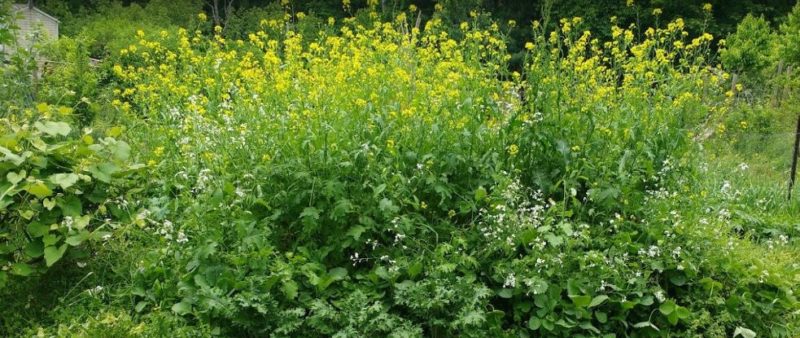
If you have never heard of allelopathic plants, you are not alone. But, that doesn’t mean you aren’t already using it effectively in your garden. Gardeners have been using allelopathy in various forms for ages. Here are some you might already be using on your homestead.
Wheat
If you’ve mulched with straw or planted a wheat cover crop, you know the power of allelopathy in your garden. Wheat is useful for reducing the number of broadleaf and grass weeds in a plot as it grows.
Also, the dried plant matter (a.k.a. straw) may release some general allelopathic chemicals early on in decomposition. I use wheat in between my garden rows to control summer weeds and find it more effective than most other mulches in hot weather.
French Marigolds
The roots of some types of marigolds, namely French-type marigold (Tagetes patula), release a chemical (alpha-terthienyl) in the soil that prevents root-knot nematode eggs from hatching. A lot of gardeners will plant marigolds intermittently throughout their gardens as a general preventative to help control root-knot populations.
Sunflower, Walnut, and Sorghum
Some allelopathic plants, such as sunflower, walnut, and sorghum, are able to suppress the growth of a long list of other plants with their chemical powers. These three plants release allelopathic chemicals through their root systems and while their plant parts decay.
Walnut leaves are an excellent mulch if you want to suppress most weeds for a while. They work particularly well on nightshade family plants.
Similarly, sunflower stalks and roots make for a great weed mat for many months until they fully decay.
Buckwheat
Some allelopathic plants are especially good at suppressing specific plants rather than all sorts of plants. Buckwheat, for example, is great for reducing amaranth seed germination.
I learned this by chance one year when I had to remove an amaranth crop because of a blister beetle problem. It was scorching, and buckwheat is the only thing that grows well in those conditions. So I grew it as an interim cover crop. Incredibly, almost no more amaranth seeds sprouted that year or the next!
After that experience, I learned that researchers have even been exploring ways to use the allelopathic benefits of buckwheat to reduce populations of herbicide-resistant pigweed in farm fields. Pigweed is a distant cousin of grain amaranth.
Brassicas
All brassicas, such as cabbage, mustard, kale, rapeseed, radish, and more have some allelopathic properties. Mustard, for example, has the power to suppress many fungal pathogens in the soil if tilled into the soil.
Some kinds of radish have a particular knack for suppressing johnsongrass. Extracts of black mustard can limit the germination of some legumes like alfalfa, lentils, and oats (which have some legume-like properties).
Broccoli can be allelopathic to later-planted broccoli or any other crops in the brassica family. So, it’s a good idea to rotate your broccoli every planting. Also, do not plant other brassicas where broccoli has recently been grown.
Contradictorily, some brassicas may also contain a growth-enhancing hormone called brassinolide. Rapeseed plants, in particular, have been found to have high levels of this. This hormone may have a beneficial effect on other plants if the crop residues are left in the ground after harvesting the seeds.
This is not quite the same as other examples of allelopathy. But if rapeseed residues end up benefiting faster-growing plants and slower growing plants lose to those steroidal driven, aggressive competitors, then even growth hormones can be said to have allelopathic outcomes.
Now that you know some examples, and may have already used some of them in your garden, let’s dig a bit deeper!
What Makes a Plant Allelopathic?
The word allelopathy comes from a combination of Greek words that mean to cause suffering or harm to another. Related to plants, it means that a plant can cause an adverse reaction in other plants, bacteria, fungi, and various kinds of soil life.
Allelopathic plants are a bit like kryptonite to their victims by making them weak so that they can’t fulfill their natural function. The impacts can be broad-ranging such as being directed at all broadleaf plants. Or, they can be limited only to certain plants or specific soil life forms.
Often, the plant roots exude allelopathic chemicals as a way to protect themselves as they grow. Also, decaying plant matter my leach those chemicals into the ground. Generally, once the plant matter is fully decayed, the allelopathic properties tend to time out.
Now, even though the reaction might be negative from the victim’s perspective, allelopathy can be a beneficial tool to use in managing a garden. Of course, if used incorrectly, it can also wreak havoc on your garden by limiting the growth of plants you plant on purpose.
Allelopathy Knowledge
There are many scientific studies on plant allelopathy. However, the plants studied tend to be limited to those with industrial agricultural significance such as wheat, corn, sorghum, sunflowers, etc.
So, unfortunately, there’s no exhaustive list of allelopathic plants we can refer to find out which plants might harm other plants or how to use them. Much of what we know about allelopathy comes through observation and trial and experience.
There are also lots of exceptions. For example, sunflower roots are known to generally suppress seed germination around their root zone and reduce plant growth in general. However, I’ve grown giant heads of lettuce or borage directly under my sunflower plants many times with no difficulty.
New research on allelopathic plants is coming out every year. So if you are planting something new or are having new challenges in your garden, doing research on allelopathy plants and of what you are growing is a good idea.
List of Allelopathic Plants
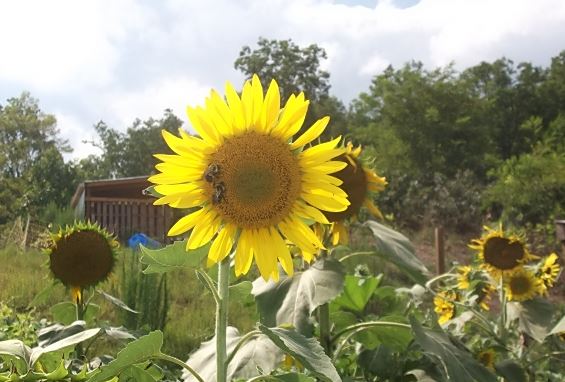
Even though I can’t give you an exhaustive list, the following is a list of all the plants I have come across in my research through the years that likely do have allelopathic properties.
Some are weeds that might be causing allelopathic issues in your garden. Others are plants you may include in your landscape on purpose.
- Ailanthus (Tree-Of-Heaven)
- Aster
- Barley
- Bearberry
- Brassicas (All to varying degrees)
- Buckwheat
- Canada Thistle
- Cedar
- Corn (specifically corn gluten)
- Cucumber
- Dog Fennel
- Elderberry
- Eucalyptus
- English Laurel
- Ferns
- Foxtail (Yellow and Giant)
- Forsythia
- French-type Marigold
- Garlic mustard weed
- Goldenrod
- Johnsongrass
- Juniper
- Kentucky Bluegrass
- Nutsedge
- Oats
- Oregano
- Rye
- Rosemary
- Quackgrass
- Ragweed
- Rhododendron
- Sorghum
- Sugar Maple
- Sumac
- Sunflower
- Tall Fescue
- Walnut
- Wheat
If you’ll be planting any of the items in your garden, do a quick online search of your plant name plus the word allelopathic to get more details on the current research.
If you have any of these items growing as weeds in your garden, you may want to do the same search to understand whether aggressive weed control is necessary or not.
You may also want to look up your plant along with the term “companion planting”. There are a lot of different reasons why certain plants grow well together or don’t get along with others. So, companion planting tips may or may not be for allelopathic reasons. Often, though, allelopathy is at work in “bad companions”.
Tips on Using and Preventing Allelopathy in the Garden
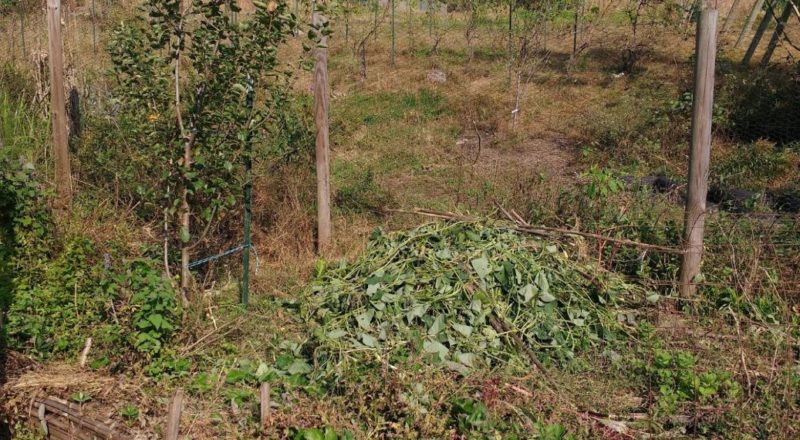
Now that you have some good background on what allelopathy is; how you might already be using it in the garden; and know some plants to look out for; let’s get to some helpful tips.
Tip 1: Be Careful with Crop Residues
I’m an organic gardener. So, I use a lot of cover crops and leave a lot of crop residues on my garden beds as green manure or mulch. However, I’ve learned to be careful with crop residues.
As a habit, I remove all the plant parts from sunflower, sorghum, corn, and cucumbers from my garden beds. I either compost them or use them as mulch under some of my fruit trees to suppress weed growth around the root zone.
I don’t leave them in beds though because they tend to take a while to decompose and can leach allelopathic chemicals into the ground until they are fully composted.
Tip 2: Control the Allelopathic Weeds
I love weeds, in general. But there are a few I keep well away from my annual garden. Quackgrass, nutsedge, and ragweed are never allowed to get a foothold in my annual planting areas because they might slow growth in many nearby plants.
Weeds with allelopathic properties can deprive your preferred plants of nutrients and make it difficult to germinate seeds. It’s best to completely remove and burn those weeds to make sure they don’t negatively impact your yields.
Tip 3: Know Your Cover Crops
Many cover crops are beneficial specifically because they have allelopathic properties. Mustard, tillage radish, wheat, buckwheat, and rye are good examples.
– Wheat and Rye
Wheat and rye are good general weed suppressants and make good winter cover crops. However, because of their allelopathic properties, it’s a good idea to remove or till them in at least a few weeks before you plan to plant new crops in those beds.
– Tillage Radish
Tillage radish, which makes a great soil breaker for heavy clay soils, is often espoused to be an allelopathic weed preventative. However, in studies, no allelopathic weed suppression has been found. Instead, the dense canopy from the fast-growing radish simply out-competed other plant growth.
Research does suggest that concentrated extracts of tillage radish might possibly delay lettuce seed germination. So, as a precaution, I don’t plant tillage radish directly before lettuce in my crop rotations.
– Mustard and Buckwheat
I’ve already detailed the biofumigant benefit of mustard and the amaranth seed germination reduction benefit from buckwheat. But new research on the allelopathy of cover crops is emerging fairly often. So, it’s worth doing research each year to stay current on allelopathic uses for these cover crops.
Tip 4: Use Crop Rotation
There are a lot of great reasons to use crop rotation, which makes it good general practice. However, allelopathic chemicals can build up in the soil from season to season. That, in turn, can lead to a general decline in garden health.
For example, planting sunflowers in the same bed for a year or two might be fine. But, after enough allelopathic chemicals build up, even sunflowers may not be able to germinate in that location for a few years.
Tip 5: Maintain Living Soil
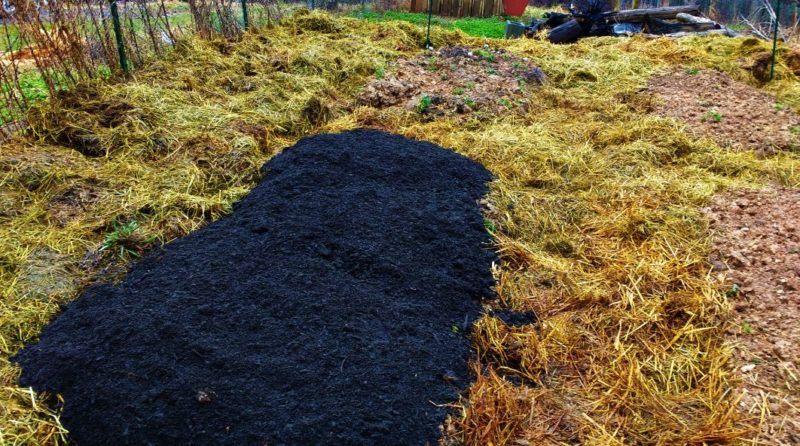
If you are in the habit of applying compost and supporting the biological life in your soil, the long-term risks of allelopathic plant damage to your garden are naturally minimized.
Although allelopathic chemicals can linger for a while even after plant residues are removed, they will eventually decompose and become inactive in the soil. By maintaining living soil, and adding compost annually, decomposition of allelopathic residues tends to happen a lot faster.
Also, by top dressing beds with a few inches of compost, you create a barrier between seeds and allelopathic chemicals lingering in the soil below. Seeds can germinate. Then, a few weeks later, when roots reach the soil level, those allelopathic compounds will have lost some or all of their power through speedy decomposition.
Conclusion to Allelopathic Plants
There is a lot more to know about allelopathic plants. But hopefully, this primer will help you use the benefits effectively and avoid the pitfalls that come for inadvertently planting allelopathic plants in the wrong places.
Or, at the very least, you won’t confuse holipathic with allelopathic like I did all those years ago!

